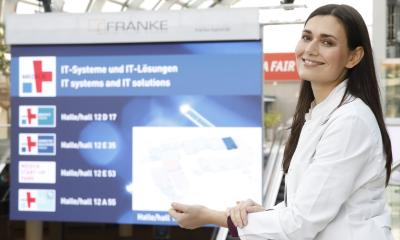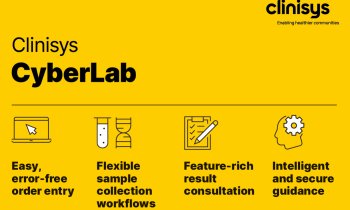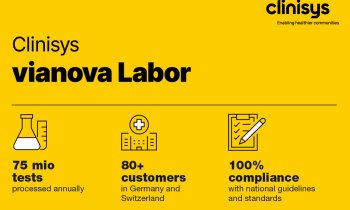Data communication
Healthcare IT providers think about data management as much as medical technology manufacturers, which are increasingly developing solutions for data workflow. Medical devices in different hospital departments generate important patient data every day that is relevant beyond a ward or department. Dräger Medical Systems specialises in patient monitoring in acute medicine.

Uwe Scheller, Dräger’s Director of IT Systems Solutions and Service for Central Europe, talked to European
Hospital about the firm’s mission to make information on vital signs from the operating theatre, ICU, A&E and neonatology widely available in the hospital
To support hospitals with the workflow of data, Dräger follows different approaches, which can be either software- or network-based. Dräger transmits data from ist equipment, such as haemodynamic measurements, to the main information systems (HIS/PACS, laboratory, radiology) via HL7 interfaces and communication servers. The general rule is that the complete documentation of measurements from Dräger devices can be delivered to any data information system that has an HL7 interface. However, this prerequisite is not always a given, Uwe Scheller explains: ‘We frequently encounter requests to transmit our monitoring data into the HIS or PACS without there being the respective fields available in the system into which the data can be fed. We obviously communicate with our customers’ HIS and PACS manufacturers to find possibilities
informs other manufacturers and solutions for the data transfer.’ In this respect, Dräger itself has a very open information policy. The company regularly about changes to the equipment interfaces.
The Integrated Care Manager, one software-based technology offered by Dräger, is a patient data management system (PDMS) used as a clinical information system in intensive care. The main advantage of this best-of-breed solution is that the documentation is customised for the particular needs of acute medicine. ‘Such sub-systems are important, because it doesn’t make any sense to store individual data building blocks in the HIS, which is the leading data information system in a hospital,’ he points out. ‘Then later, the HIS only stores the complete history of a patient’s stay in intensive care in the patient file rather than individual steps of the protocol.’
When a patient is transferred from the intensive care unit (ICU) to an ordinary ward the Integrated Carer Manager offers doctors various ways of communication. The easiest is the creation of a PDF-file detailing treatment and medication so far and to transmit this to colleagues on the ward who will carry on tending the patient. However, this process also works the other way round. For example, radiological information can be included and visualised in anaesthesiology documentation: ‘We can visualise images and films in the DICOM format using the Dräger Infinity Explorer. This application allows us to get an initial overview of a patient’s condition directly at the hospital bedside. However, the resolution of our PACS viewer is not suitable to carry out a diagnosis,’ Uwe Scheller explains.
The Director for IT Systems and Service looks after customers in many European countries and internationally. He encounters very different requirements across the different healthcare markets when it comes to data management and transfer: ‘Department-specific subinformation systems, such as the Integrated Care Manager, are mainly used in the rmanspeaking area and in countries that have introduced a DRG system. Services rendered can be captured via the sub-information system and transmitted into the HIS, i.e. the documentation programmes help to generate money and are used for resource management. However, there are also countries where electronic data collection is treated much like a continuation of the handling of paper-based patient files.’
Whilst he still describes Eastern Europe as ‘uncharted territory’, which is still, if at all, in the process of developing an IT infrastructure in acute medicine, Uwe Scheller sees Scandinavia as one of the most progressive market: ‘The HIS technology is usually very advanced there. More often than not, a simple charting tool, which carries out the collation, visualisation and transfer of data, suffices as the interface between the information systems. However, the Scandinavian market develops independent of the relevance of the reimbursement structure of hospital services, i.e. whether or not it is a publicly or privately financed healthcare institution. ‘No matter how advanced a hospital network structure may be, medical technology
manufacturers such as Dräger will increasingly need to ensure that their devices can communicate
17.11.2011











